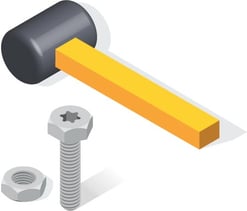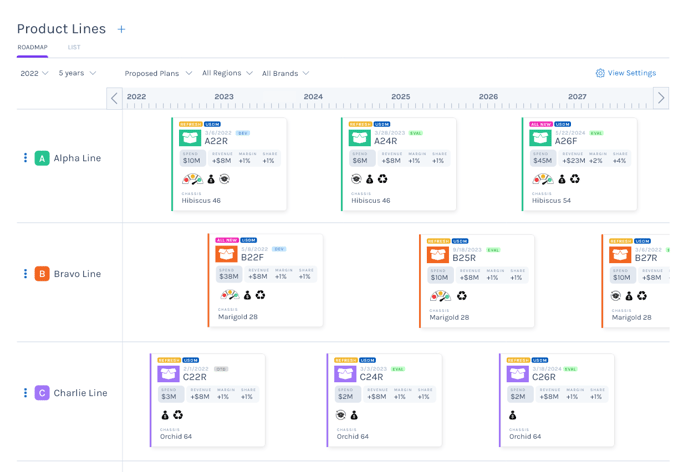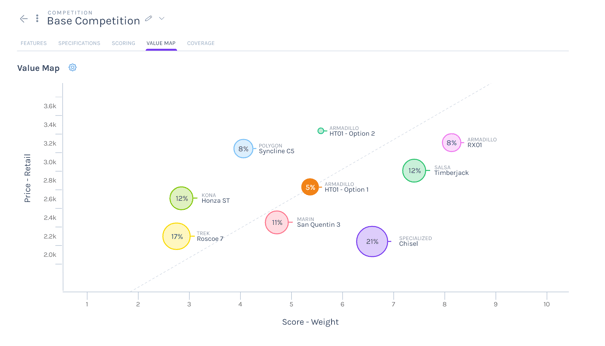 Product managers are essential figures in the product development process whether the product is hardware or software. It is their job to understand the vision of the company and translate it into a product plan through which the business goals can be realized.
Product managers are essential figures in the product development process whether the product is hardware or software. It is their job to understand the vision of the company and translate it into a product plan through which the business goals can be realized.
Within the complex product manufacturing world, there isn't a single aspect of product development that is not out of the scope of responsibility of the product manager. They are responsible for the following:
- Evaluating opportunities in the market.
- Defining which products to build.
- Overseeing the production process.
However, success is dependent on a number of factors, and a truly great product manager knows that he needs the support of product teams and the right product management tools in order to succeed.
Product Managers Need A Clear Vision
 Your vision establishes where the company hopes to be within a set time frame. In manufacturing, your short-term goals focus on the immediate future, from one to five years, while your long-term goals can extend anywhere from ten to fifteen years. Your goal could be to gain 75% market share in the next ten years. Your goals could also entail breaking into major European markets within the next fifteen years. Whatever aspirations your company holds, having a clear vision is crucial, as it informs every decision your product managers make.
Your vision establishes where the company hopes to be within a set time frame. In manufacturing, your short-term goals focus on the immediate future, from one to five years, while your long-term goals can extend anywhere from ten to fifteen years. Your goal could be to gain 75% market share in the next ten years. Your goals could also entail breaking into major European markets within the next fifteen years. Whatever aspirations your company holds, having a clear vision is crucial, as it informs every decision your product managers make.
Clarity Is the Best Policy
The best product visions are clear and concise. While the product strategy focuses on how you reach those goals, the vision should be memorable. Your stakeholders should clearly understand how their contribution to the process aligns with the overall vision.
Product Managers Need A Strong Team
 Your product teams are your most important resource. While executives guide the vision, product managers and their teams put the plan into action.
Your product teams are your most important resource. While executives guide the vision, product managers and their teams put the plan into action.
- Research and Development - All products are born from an idea. Before developing that idea, a company needs to assess the product's viability.
- Design - The design team works on the aesthetics and usability of the product, considering what will visually appeal to the consumer but also ensuring optimal functionality.
- Engineers - The engineering team build the specific features into your product with a focus on improving technology to promote innovation
- Purchasing - Discrete manufacturing requires multiple components sourced externally to create a finished good. Ensuring that these materials are available and arrive on time is key to minimizing the risk of products not being ready for market.
- Marketing - The job of the marketing team is to spread the word about the product in engaging and innovative ways, to drive sales and increase market share.
- Customer Success - The customer success team is your link to the end user. While providing support for the product, their interaction provides valuable feedback to understand what the customer values about the product and where improvements can be made.
- Finance - No strategy would be complete without a budget that ensures the financial viability of the product plan.
Each of these stakeholders has a pivotal role to play in ensuring that you get the best product out into the market. A strong team is not just a team that possesses the necessary skills and expertise but a team that is fully committed to realizing the goals of the company. A strong team is an inspired one that has the enthusiasm to take your goals and make them their own. This is the foundation for innovation and success, so promoting these strong values within your development teams is crucial.
Build Strong Relationships and Cross-Functional Collaborations
Building strong relationships with product teams is a two-way street. Focusing on improving communication by promoting discussion and soliciting feedback is a great way to gain alignment with your product strategy. While each product team has its own distinct function within the product plan, cross-collaboration promotes transparency and a deeper understanding of the entire development process.
Product Managers Need The Right Tools
 While the right team allows you to effectively implement your strategy and realize your goals, having the right tools to coordinate the effort is vital to success. Product Roadmap Management (PRM) software is the resource you need to manage your strategy at all levels. Your roadmap is your single source of truth that outlines a product's direction and progress over time.
While the right team allows you to effectively implement your strategy and realize your goals, having the right tools to coordinate the effort is vital to success. Product Roadmap Management (PRM) software is the resource you need to manage your strategy at all levels. Your roadmap is your single source of truth that outlines a product's direction and progress over time.
Creating a Clear Roadmap for Products
As a product manager, your portfolio must be in alignment with the business goals of the company. It's important to assess how your products are performing continually to maintain a successful roadmap.
Because a product vision can change over time, it's important to keep assessing and evaluating the product portfolio. Continuous analysis helps determine whether the existing products are still viable, whether new features need to be introduced, or whether new products should be built.

Your Agile Roadmap
Product manufacturing also involves sourcing materials and components, researching market trends, and creating a supply chain free of disruptions. For these reasons, you need agile teams that can pivot quickly and course-correct in situations of unexpected volatility. With PRM software, the functionality of your roadmap has great agility due to higher transparency. When you need to change your course, you can relay updates across the entire organization. PRM software by Gocious is intuitively designed to reflect changes across a wide spectrum of product development features.
Competitive Analysis
Competitive analysis guides your decision-making process by comparing your products to the competition, giving you better insight into where you excel and where products fall short.
Through the competitive analysis tool, you can aim to answer several questions, including: How does your product currently stand within its market? How do your product features and specifications compare with that of your competitors? What updates can we make to make our products more competitive?

Gocious PRM software also has built-in tools to allow you to assess the outcome of updating and removing specific features. While it can project anticipated results, it also calculates the costs of making these changes. Quantitative data allows better decision-making as you can better assess the viability of making updates from a sales and financial perspective.
Product Comparison Analysis
Knowing your competition is important, but it's also useful to know how your own products stack up against each other. The Gocious product line dashboard allows you to define your products by inputting the features of the product and defining which ones are unique, standard, or optional. You can also set dependencies to manage feature functionality better.
The product scorecard feature lets you visualize your products against each other to compare features within your product portfolio. Further analyzing the effect of alternative feature configurations helps you model different scenarios to decide on the best combinations.

Improve Your Product Management Roadmap With Gocious Software
Designed specifically for the manufacturing industry, Gocious PRM software is your single source of truth that makes products easy to manage. At Gocious, we work closely with product managers to understand their needs. This is why we created our Product Roadmap Management system. Book your free demo to see how Gocious can help you succeed in the complex world of product manufacturing.



